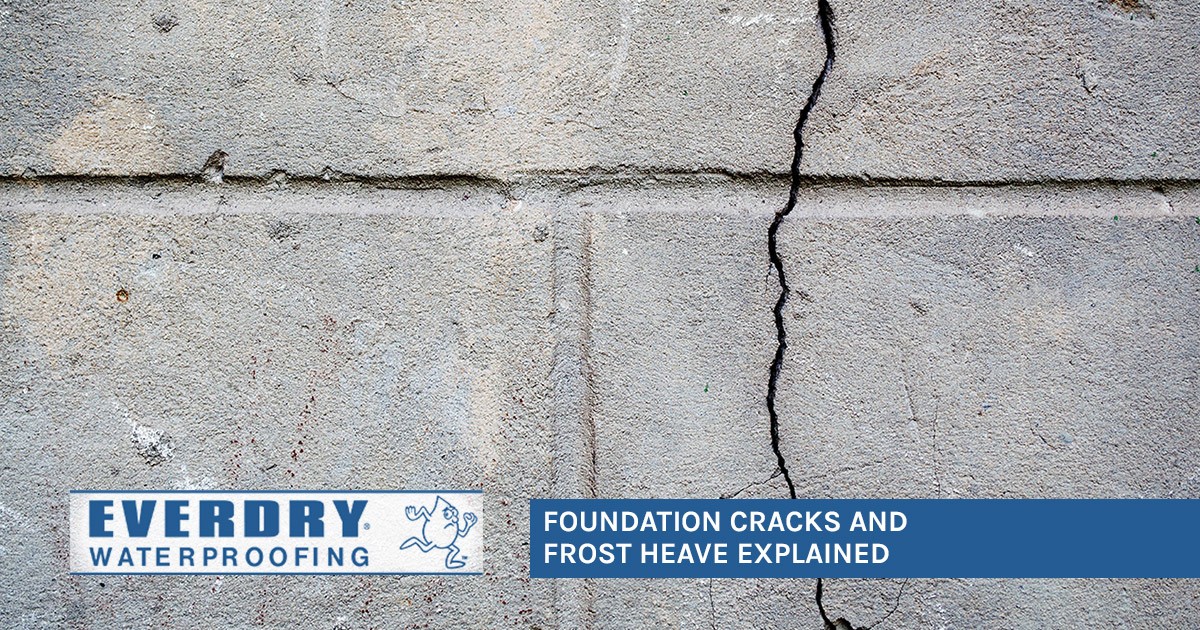November 17, 2025
Homeowners across Rochester, NY and the surrounding Finger Lakes region know that winter weather can be brutal. Between heavy snow, freezing temperatures, and constant freeze and thaw cycles, your home’s foundation faces a lot of stress. One of the biggest cold-weather threats is frost heave, a natural process that can shift soil, damage foundations, and lead to costly repairs if left unaddressed.
Understanding what frost heave is, how it contributes to foundation cracks, and what signs to watch for can help you protect your home's foundation before winter causes deeper issues.

What Is Frost Heave?
Frost heave occurs when moisture in the soil freezes, expands, and pushes the ground upward. In areas like Rochester, where temperatures frequently dip below freezing, this freeze and thaw process can happen repeatedly throughout the winter.
What Causes Frost Heave?
Several factors contribute to frost heave, including:
- Moist soil conditions
- Poor drainage
- Deep frost levels in cold climates
- Water absorbing soils such as clay and silt, which are common in the Rochester region
Book Your Free Basement Inspection
How Frost Heave Can Lead to Foundation Cracks
As frozen soil expands, it pushes upward and outward, placing significant stress on a home’s foundation walls, footings, and floors. Over time, this pressure can lead to a variety of structural problems, including horizontal cracks along foundation walls, vertical or diagonal cracks caused by shifting soil, and noticeable gaps between floors and walls.
In more severe cases, homeowners may also see tilting or bowing foundation walls as the soil continues to move throughout the winter. Once these cracks appear, water infiltration becomes much more likely, especially during early spring snowmelt. In the Rochester climate, this combination of soil movement and moisture can create both structural strain and ongoing basement water issues if not addressed promptly.
Other Homehold Problems Caused by Frost Heave
While foundation cracks are one of the most common problems linked to frost heave, homeowners may notice additional issues such as:
- Uneven or sinking floors
- Sticking windows and doors
- Cracked drywall or wall seams
- Damage to exterior concrete, walkways, or driveways
- Basement leaks caused by shifting soil pressure
These symptoms often develop gradually, which makes routine basement inspections especially valuable in cold-weather regions like Rochester.
Contact Everdry NY Today
How Homeowners Can Prevent Frost Heave Damage
Homeowners in the Rochester area can reduce frost heave risks by taking steps such as:
- Improving exterior drainage
- Sealing small foundation cracks before winter
- Making sure soil is properly graded away from the home
- Adding insulation to basement walls to help regulate soil temperatures
- Scheduling a seasonal foundation or basement inspection to catch early warning signs
Taking these simple steps can go a long way in protecting your foundation from winter damage.
Protect Your Home From Frost Heave Damage
Frost heave is a serious winter hazard that can cause soil movement, foundation cracks, and long-term structural problems. Understanding how frost heave works and how to prepare your home is the key to preventing costly repairs. If you suspect frost damage, notice foundation cracks, or want a professional opinion before winter hits, Everdry Waterproofing of NY can help.
Contact us today or schedule your free basement inspection online to keep your home protected this winter.




